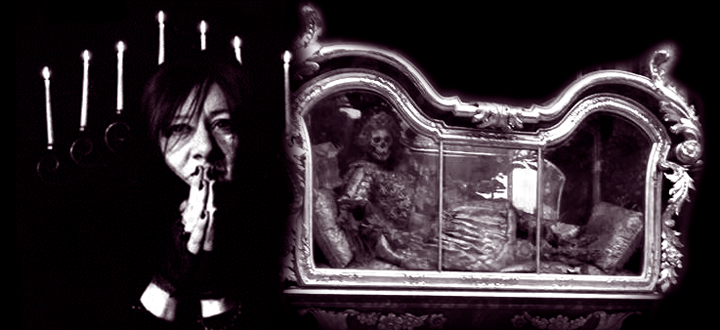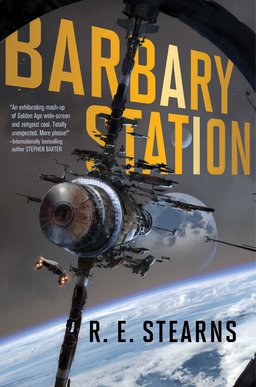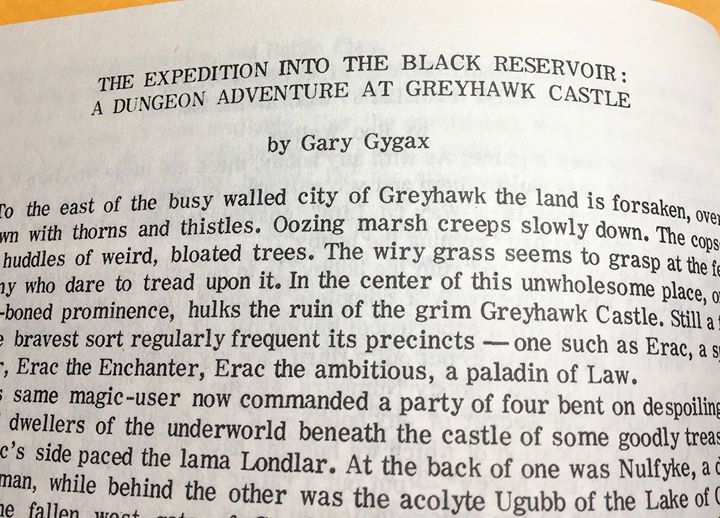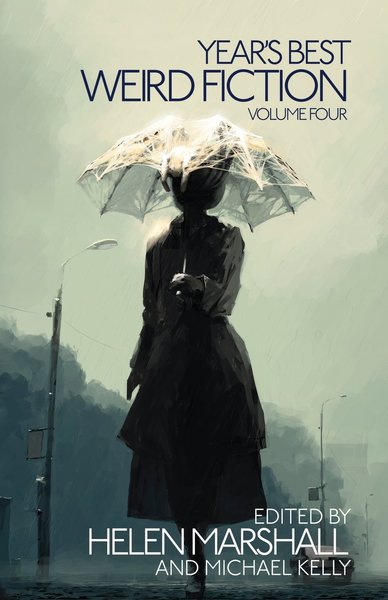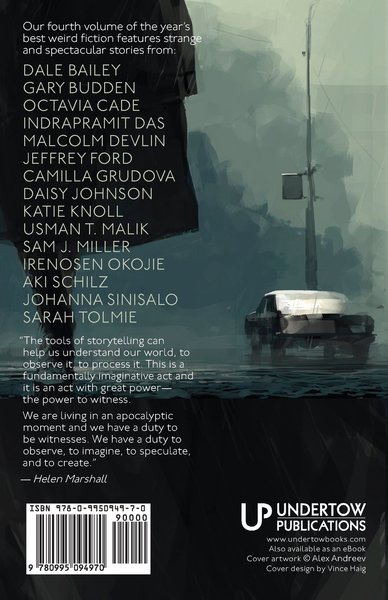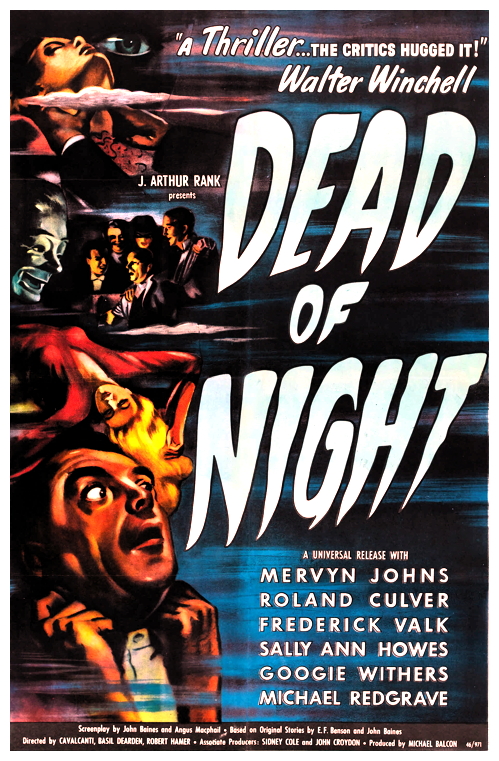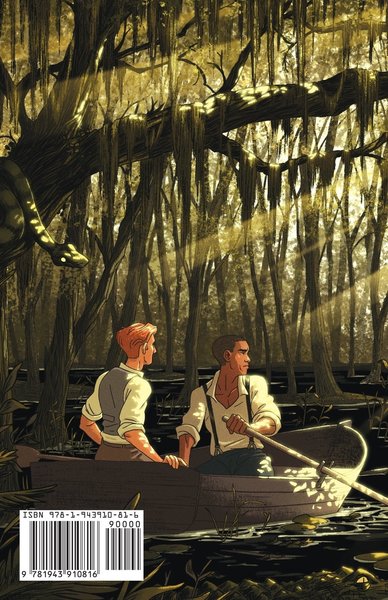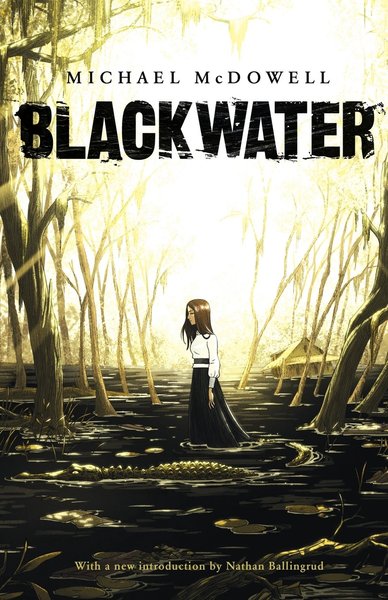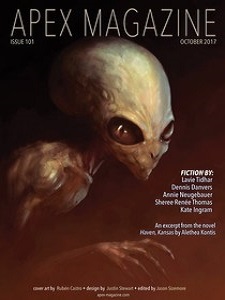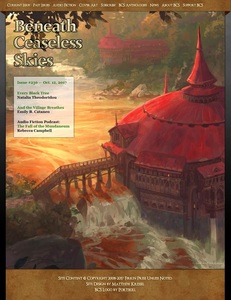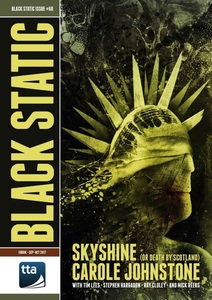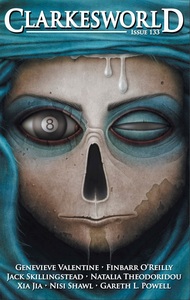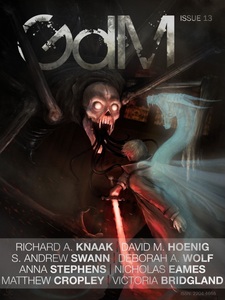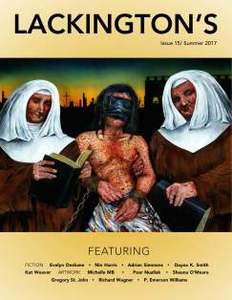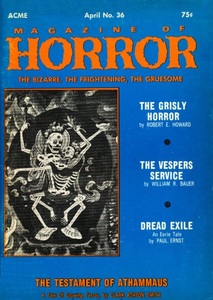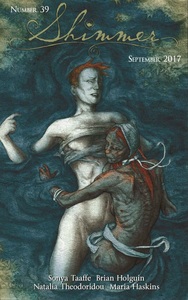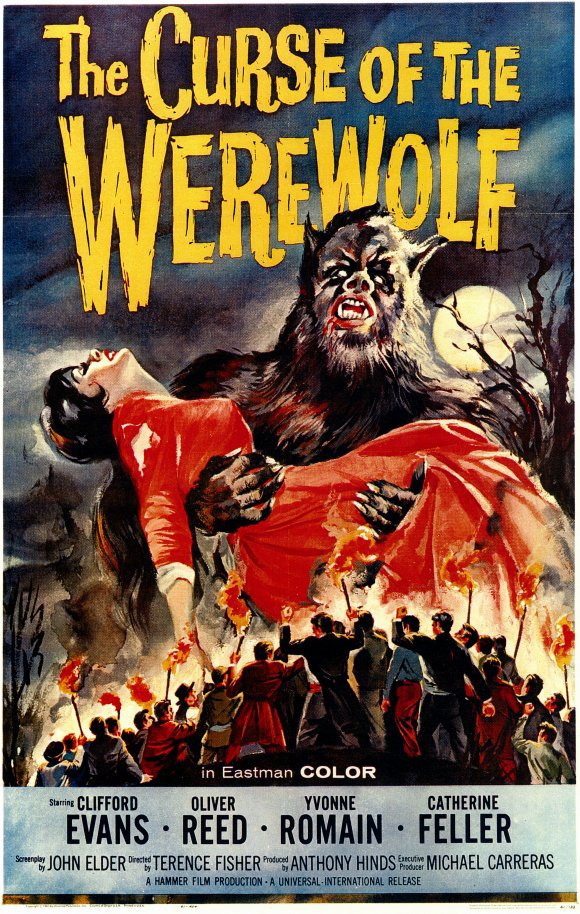A Tale Most Gruesome and Bonkers: Dark Ventures by T.C. Rypel
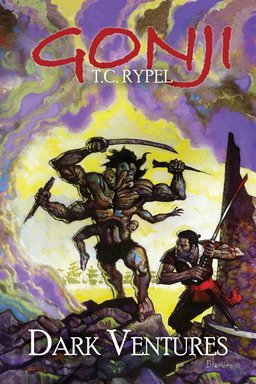 Aside from his own terrific swords & sorcery tales, the thing I’m most grateful to Joe Bonadonna for is hipping me to the Gonji stories of T.C. Rypel. For those unfamiliar with him, Gonji is a half Viking, half Japanese warrior, cast out of Japan and in search of his destiny across a monster- and sorcery-ravaged Europe. His epic struggle against malign magical powers are told in a series of five novels: Red Blade from the East (2012), The Soul Within the Steel (2013), Deathwind of Vedun (2013), Fortress of Lost Worlds (2014), and A Hungering of Wolves (2014). The novels (reviewed by me at the links) are dense works of remarkable storytelling, filled with deeply memorable characters and complex worldbuilding. Now, appearing for the first time, is a collection of shorter works called Dark Ventures (2017).
Aside from his own terrific swords & sorcery tales, the thing I’m most grateful to Joe Bonadonna for is hipping me to the Gonji stories of T.C. Rypel. For those unfamiliar with him, Gonji is a half Viking, half Japanese warrior, cast out of Japan and in search of his destiny across a monster- and sorcery-ravaged Europe. His epic struggle against malign magical powers are told in a series of five novels: Red Blade from the East (2012), The Soul Within the Steel (2013), Deathwind of Vedun (2013), Fortress of Lost Worlds (2014), and A Hungering of Wolves (2014). The novels (reviewed by me at the links) are dense works of remarkable storytelling, filled with deeply memorable characters and complex worldbuilding. Now, appearing for the first time, is a collection of shorter works called Dark Ventures (2017).
Before I start telling you about the book, let me be up front: I consider Ted Rypel a friend, and I was privileged to read a pre-publication version of the new book’s central novella, “Dark Venture.” Ted loved my description of the story so much he used it as a blurb on the back cover:
People will not know what hit them when they read “Dark Venture.” It’s one of the most exciting (and gruesomely bonkers) swords & sorcery stories I’ve had the pleasure of reading.
I meant those words when I first wrote them a couple of years ago, and I stand by them today.
Dark Ventures opens with the short story “Reflections in Ice.” It’s an expanded and revised version of the first chapter of the novel Fortress of Lost Worlds. In it, Gonji and his companions, having survived the events of the first three books, are making their way across the Pyrenees Mountains in response to a summons for their aid. Slowly they are being killed, stalked by unseen and supernatural hunters:
The ghostly army comes again the next night, and the next, pursuing when we flee, retreating when we advance. Two more men are savagely slain by unerring bowshot, despite all caution and hastily fashioned defensive shielding. To wheel and engage them is to encounter mocking laughter from that effulgent bank of nothingness they inhabit. To run or take a stand is to be subjected to more casual slaughter, as if we are mere game; more sudden chilling eruptions of screaming and gouting blood, under the assassins’ uncanny aim.
As his party is whittled down to fewer and fewer members, Gonji is forced higher and higher into the mountains in search of refuge, but finding only more horrors. “Reflections” is a dark tale that is suffused with a sense of impending death, and becomes increasingly despair-filled and claustrophobic with each step forward.
